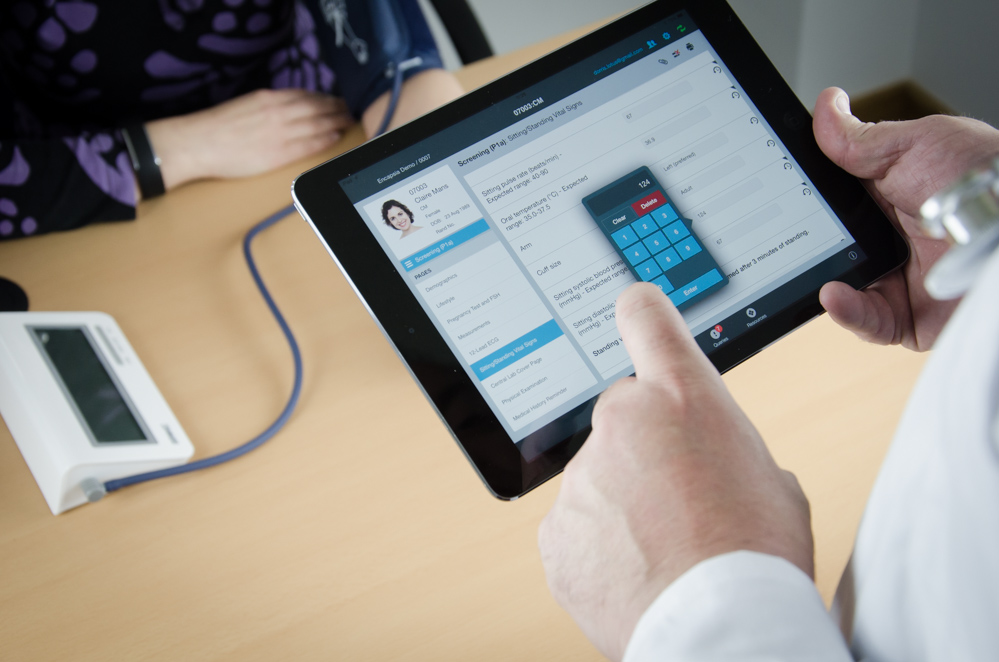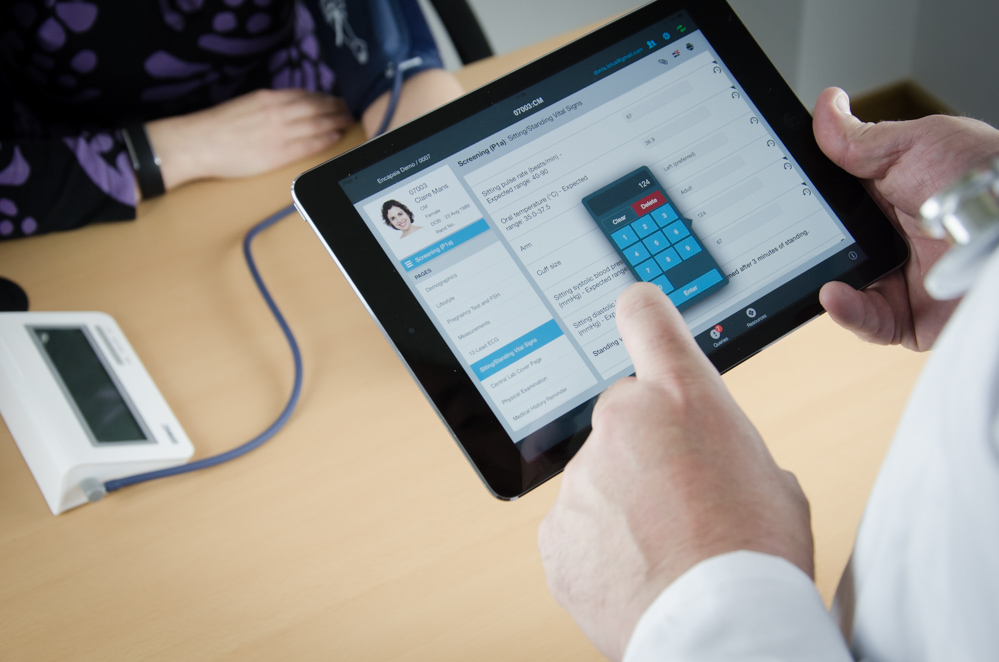From Patient Identification to Submission, What Would be a “Game Changer” for Flexibiilty, Accuracy, Speed and Cost Efficiency?
Situation
As an industry, we encompass some of the most intelligent scientists and business experts. So why do we consistently face significant challenges in the successful completion of clinical trials? From finding appropriate and eligible patients (particularly in complex or rare indications) to ensuring the cleanest of clinical data sets, we continue to struggle with extended timelines and confounding endpoints. All of which leads to delays in making critical go/no go decisions and drug approvals. We work in an environment where we have vast quantities of clinical data being collected and streamed into our ‘warehouses’ and ‘lakes’, employing an ever increasing number of collection methodologies; consequently making the ‘pooling’, review and analysis, ever more difficult to manage.
In an effort to avoid integration “paralysis”, we assign huge attendant workload and complexity in an attempt to combine mobile data, eDC, CTMS, Laboratory, Imaging, IXRS, and ePRO data in a meaningful fashion.
Even in a relatively simple clinical trial, it is likely that multiple computer systems will be used, each concentrating on a specific function or purpose. This fragmentation means the Sponsor/ CRO team may have to interact with multiple vendors (each with their own team), create and review multiple specifications for each system and the integrations between them. This process is expensive, time-consuming and error-prone. Updates which occur during the trial (for example, in response to a protocol amendment) must be coordinated across systems and suffer from the same problems. Data which applies across systems (such as sites and users) may have to be maintained in multiple places and reconciled.
Attempts to move beyond the days of multiple point solutions have resulted in “eClinical platforms” which offer connections to multiple technologies. However, these platforms are normally the result of acquisition of one vendor by another or partnership between different companies. Often resulting in an integrated system that is reliant on moving data from one component to another. While there is a significant marketing effort to promote the capabilities of these integrated platforms, it is difficult to obtain verifiable data on how successful they are. Anecdotally, reports from Sponsors, CROs and even software vendors themselves, indicate that such integrated systems can be cumbersome to deploy and difficult to maintain, with marginal benefits that have little effect on overall project timelines and cost.
With clinical data, we have an opportunity to utilize ‘Big Data’, ‘Dark Data’, ‘Lost Data’ and ‘New Data’, and make it all ‘Fast Data’, where analysis creates ‘Actionable Insights’ leading to better decisions and enhanced business strategy. BUT how do we avoid Data Deficiencies in Source Data? How do we follow FDA/EMA guidelines on minimizing Source Data Verification (SDV) whilst maximizing Source Data Review (SDR)? And can Remote/Central Monitoring really be achieved (and is it beneficial)?
With more than an ‘eye’ to patient centricity how might it be possible to have direct access to patients, site staff and optimize intra-site communications? Is there a tangible benefit in having immediate capability to verify patient eligibility by a Medical Monitor or CRA, and how do we ensure that eSource data (currently a ‘hot topic’) can be both accurate and transferred to the Patient notes/EHR?
Target
We know we are on the precipice of a new generation of integrated systems that allow opportunities to incorporate and collect data leading to the “right” decisions.
These systems will incorporate intelligence to collect and view data points critical to ensuring accurate patient selection and meeting of end points to the satisfaction of EMA/FDA. Through the immediate review of data entry, application of Risk Based Monitoring (RBM), reduced SDV, and increased SDR, we are able to employ central monitoring methodologies to achieve improved patient centricity. This allows for direct access to patients, site staff and intra-site communications; all leading to better decisions and enhanced business strategy – ‘The Holy Grail’?
The ideal is a fully – and truly – integrated system, where the technology goes to the clinical data, and can ensure from a protocol/study design perspective patients are appropriate for the study, the clinical data can be uploaded, reviewed, queried/resolved and decisions made – all instantaneously.
Better patient targeting/monitoring/management would significantly reduce monitoring time with immediately clean data, as well as give more time for site staff, leading to better care for patients.
The clinical data collected could be immediately used to drive the direction of the study, assess, analyze and report all relevant clinical trial information in simple, flexible, accurate and impactful user controlled reports for study teams, program leaders and senior managers.
Proposal
During this webinar the speakers will address many of these questions and present a possible solution to these challenges, which we believe will go a long way to answering the original question: “From patient identification to submission, what would be a ‘game changer’ for flexibiilty, accuracy, speed and cost efficiency?”
This will take the form of ‘A day in the life of a data point’ and will demonstrate how elements of the preceding questions may be answered through a truly flexible, new seamless approach. Immediate access to entered data drives data quality, patient safety, increases productivity and demonstrates the ability to utilize this real time clinical data for effective and efficient decision making.
Designed to unify disparate elements, Cmed has developed a modular, new generation Clinical Data Suite that consists of a constellation of components, called Encapsia™. It offers a single representation of the data which all of the modules access, thus no integrations and no transportation of data from one system to another. A single configuration represents each trial, defining the data structures, visit schedule, forms, validation checks and workflow for all components. In addition, various monitoring strategies can be applied to a same trial supporting regulatory requirements. This is encompassed in what we describe as a system to: Simplify, Improve and Reduce.
Speakers

Graham Belgrave, Chief Operations Officer, Cmed
Graham Belgrave has over 30 years’ experience in the Pharmaceutical industry with a strong background in global clinical development, strategy, clinical operations, outsourcing and project management. As COO, he is responsible for Cmed’s day-to-day clinical operating activities. Prior to this, Graham held senior positions at companies such as Grunenthal GmbH, Vernalis, Pfizer and GSK, and has worked in consultancy and interim management positions, including in Oncology at Roche. He is a Fellow of the Royal Society of Medicine (Oncology and clinical research sections) and he is an experienced chairperson, speaker and committee member of various industry congresses and symposia.

Jon Carter, Product Manager, Cmed
Jon Carter is Product Manager at Cmed Technology. He has been with Cmed for over 10 years and recently transitioned from the CRO side of the business to the technology division. Jon began life in Cmed as a Database Programmer where he built Timaeus Clinical Databases. He particularly enjoyed programming trials with highly complex and adaptive schedules. After doing this for several years, he moved to the Cognos reporting team where he led the team that enabled the reporting of clinical data from Timaeus through to Cognos. As a Product Manager, Jon is now responsible for creating the requirements for Cmed’s new system Encapsia and helps to drive the direction of the product.
Who Should Attend?
Heads and Senior Directors of Project Management, Data Management, Innovation, and Clinical, within medium to large pharma
Xtalks Partner
Cmed
Cmed is an innovative, full service technology-led CRO. Cmed brings together experienced people and technology, providing customers with a friendly, proactive service, and delivers this service using advanced clinical data capture, management and reporting software and processes. Its vision is to conduct clinical trials better than anyone else, thus helping and saving lives.
Cmed’s new generation clinical data suite streamlines the capture, management and reporting of clinical data beyond what is currently possible, saving customers time and money. Clinical data can be captured flexibly by eSource, multi-media and web eDC, saving monitoring time and costs, while being displayed in live visual insights, providing live analytics, and allowing within suite audit trailed actions. It’s fully compliant with regulatory guidelines, and allows integration with existing systems.
Media Partner
You Must Login To Register for this Free Webinar
Already have an account? LOGIN HERE. If you don’t have an account you need to create a free account.
Create Account





